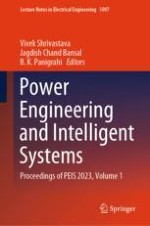2024 | Buch
Power Engineering and Intelligent Systems
Proceedings of PEIS 2023, Volume 1
herausgegeben von: Vivek Shrivastava, Jagdish Chand Bansal, B. K. Panigrahi
Verlag: Springer Nature Singapore
Buchreihe : Lecture Notes in Electrical Engineering
